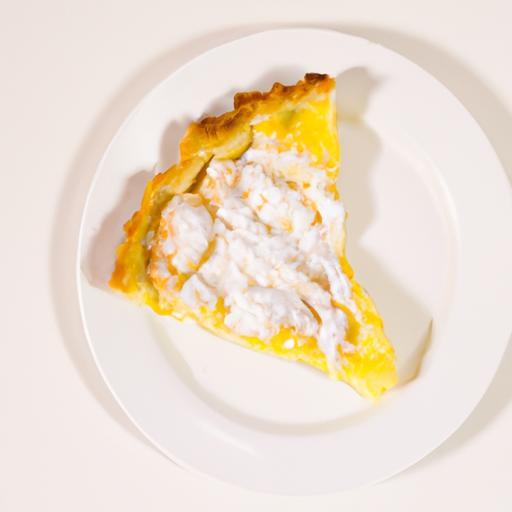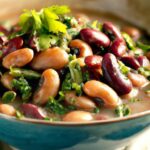In the alchemy of baking, where flour meets fire and butter whispers secrets of flavor, sugar holds a captivating power often overlooked. Beyond its familiar sweetness lies a transformative magic-one that crafts a delicate, shimmering glassy crust that crackles under the fork and beckons the senses. This is the sweet science of sugar, a journey into how tiny crystals coax the perfect glaze, turning humble pastries into dazzling gems. Join us as we unravel the chemistry and artistry behind sugar’s role in creating that irresistible glimmering finish, revealing the sweet secrets baked into every golden crust.
The Sweet Science: How Sugar Creates a Glassy Crust – The Molecular Magic Behind Sugar’s Glassy Transformation
The Sweet Science: How Sugar Creates a Glassy Crust offers a fascinating glimpse into the chemistry at play when sugar transforms from a humble granular ingredient into a dazzling, translucent masterpiece. This magical metamorphosis captivates both the eye and the palate, delivering a crispy, shiny crust with irresistible texture and brilliance. Whether you’re caramelizing sugar for a crème brûlée, crafting delicate sugar art, or perfecting a crackling candy shell, mastering temperature and choosing the right sugar variety are essential keys in achieving flawless results every time.
Prep and Cook Time
Prep: 10 minutes
Cook: 15-20 minutes
Total: 30 minutes
Yield
Makes enough caramel crust for 6 servings or 12 small sugar decorations
Difficulty Level
Intermediate
Ingredients
- 1 cup granulated white sugar (for classic glassy crust)
- ¼ cup light corn syrup (prevents crystallization and enhances shine)
- ½ cup water (for even dissolution)
- 1 tsp lemon juice (optional, aids sugar inversion)
- Butter or oil spray (to grease surfaces or molds)
Instructions
- Combine sugar, water, and corn syrup in a heavy-bottomed saucepan over medium heat. Stir gently until sugar dissolves and mixture starts to simmer evenly.
- Attach a candy thermometer and monitor closely. Avoid stirring from this point to prevent premature crystallization-swirling the pan gently is okay if needed.
- Watch for a color change: The solution will shift from clear to light amber around 320°F (160°C), signaling the start of caramelization and glassy transformation.
- Once the desired temperature (320-340°F) is reached, immediately remove from heat. If you exceed this, sugar can burn, losing that perfect glassy shine and developing bitter notes.
- Pour quickly onto a greased silicone mat or into molds. Tilt to spread thinly if a crust is desired. For decorative elements, use molds or spoons to create shapes.
- Allow to cool at room temperature undisturbed. The liquid sugar will harden into a brilliant, glass-like shell with mesmerizing shine and snap.
Tips for Success
- Choice of sugar profoundly impacts texture – fine granulated sugar melts uniformly, while some recipes benefit from superfine or caster sugar’s even dissolution.
- Temperature precision is your best friend. Use a reliable candy thermometer or an infrared thermometer to hit exact glassy-crust temperatures. A few degrees too high turns sugar amber to burnt.
- Add acid like lemon juice or cream of tartar to prevent unwanted crystallization by breaking down sucrose molecules into glucose and fructose.
- Practice timing when pouring sugar: The window for a fluid yet stable pour is narrow-prepare molds or surfaces ahead to avoid hardened lumps.
- If sugar crystallizes prematurely: Start fresh. Adding a bit of corn syrup next time will help maintain smoothness and clarity.
Serving Suggestions
The resulting sugar crust shines spectacularly when paired with soft creamy desserts-think silky crème brûlées, velvety custards, or rich chocolate tarts. Its crunchy glass-like surface contrasts beautifully with tender interiors. Garnish with edible gold leaf, fresh berries, or a dusting of powdered sugar for an elegant finish. For festive occasions, break into shards and scatter atop ice cream or mousses to delight guests with both texture and sparkle.
| Nutrient | Per Serving |
|---|---|
| Calories | 150 kcal |
| Protein | 0 g |
| Carbohydrates | 40 g |
| Fat | 0 g |

For expanding your sugar craft expertise, explore our detailed guide on caramelization techniques and visit CooksInfo for sugar science insights.
Q&A
Q&A: The Sweet Science – How Sugar Creates a Glassy Crust
Q1: What exactly is the “glassy crust” in baking?
A1: The glassy crust is that shiny, smooth, and almost translucent layer you often find cloaking pastries, cookies, and some breads. It’s a delicate, crackly surface that looks as if the baked good is encased in a thin shell of sugary glass-making it both visually stunning and texturally captivating.
Q2: How does sugar transform into this glassy layer?
A2: When sugar is exposed to intense heat during baking, it begins to melt and then caramelize. As the moisture evaporates and the temperature rises, the sugar molecules fuse into an amorphous, non-crystalline solid-a glass-like thin film. This transformation is a dance of temperature and chemistry that results in a glossy, crackly crust that encases your sweet treats.
Q3: Is this process exclusive to certain types of sugar?
A3: While table sugar (sucrose) is the star player, other sugars like glucose and fructose also participate. Each sugar has a unique melting and caramelizing point, influencing texture and shine. Bakers often experiment with blends to attain the perfect balance of gloss and crunch.
Q4: Why does the crust sometimes crack? Is that a problem?
A4: The cracking occurs because the glassy sugar layer is rigid and brittle. As the pastry underneath expands or cools, tension builds-causing tiny fractures. Rather than a flaw, these cracks add rustic charm and a satisfying crunch, signaling a perfectly caramelized crust.
Q5: Can the glassy crust be achieved without added sugar?
A5: Naturally occurring sugars in fruits or dough contribute, but pure glassy crusts rely on sufficient sugar concentration to melt and form that shiny glaze. Without enough sugar, the surface tends to be dull or matte-so added sugar or sugar-rich ingredients are essential for that signature glass effect.
Q6: Does the glassy crust affect flavor?
A6: Absolutely! Beyond aesthetics, the caramelized sugar adds complex notes-think deep amber richness, subtle bitterness, and toasted sweetness-infusing every bite with layers of flavor that elevate the baking from simple to sublime.
Q7: Can I control the thickness or glossiness of the crust?
A7: Yes! Factors like sugar type, baking temperature, and time all play a role. Lower temps and longer bakes can promote a thinner, shinier crust, while higher heat might create a thicker, darker caramelized shell. Applying a sugar syrup or egg wash before baking can also enhance gloss and texture.
Q8: What are some classic examples of desserts showcasing the glassy crust?
A8: Think crème brûlée’s brittle caramelized topping, sugar-dusted croissants with a glossy sheen, tarts with a crisp caramel glaze, and traditional glazed doughnuts. Each uses sugar’s glassy magic to crown its sweet creation.
Q9: Is the formation of a glassy crust unique to baking?
A9: Not quite. This phenomenon, known as sugar glass, is also observed in candy making-like in brittle or spun sugar creations-and occasionally in confectionery coatings. Baking just marries the chemistry with dough or batter to produce edible art.
Q10: Any tips for home bakers aiming for that perfect glassy crust?
A10: Use high-quality sugar, mind your oven temperature, and avoid excess moisture. Try brushing a light sugar syrup or egg wash on surfaces before baking for extra shine. And remember-patience is key, as slow caramelization often yields the most mesmerizing glassy finish!
The sweet science behind sugar’s transformation into a glassy crust is a testament to chemistry’s edible wonders-turning simple crystals into shimmering edible gems that delight both eyes and palate.
In Summary
As we’ve uncovered in this exploration of the sweet science behind sugar’s transformative power, that delicate glassy crust isn’t just a happy accident-it’s the result of a fascinating molecular dance. From caramelization’s golden hues to the crisp snap that delights our senses, sugar’s role extends far beyond mere sweetness. It is an artist and architect, crafting textures that elevate simple desserts into edible masterpieces. So next time you bite into that perfectly glazed tart or that shimmering candy shell, remember: you’re savoring the brilliant science of sugar, where chemistry and culinary magic unite to create a masterpiece of texture and taste.


